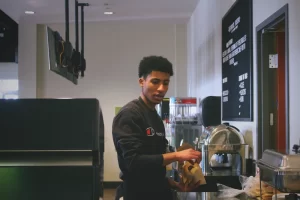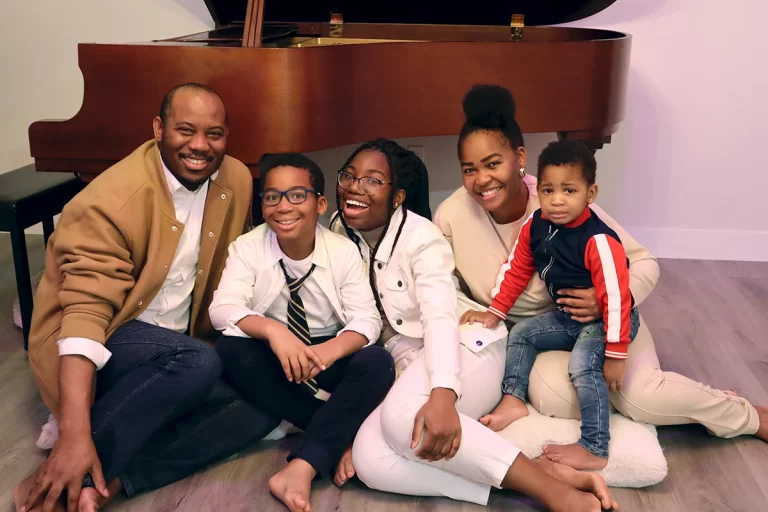
Engaging Today’s Teens
 The world of today is not the world of yesterday. The world that I grew up in is not the world that today’s teens are growing up in. The questions that I asked are not the questions that they are asking. The problems that I experienced are not the problems that they are experiencing. There’s certainly overlap, common themes, but the playing field has changed.
The world of today is not the world of yesterday. The world that I grew up in is not the world that today’s teens are growing up in. The questions that I asked are not the questions that they are asking. The problems that I experienced are not the problems that they are experiencing. There’s certainly overlap, common themes, but the playing field has changed.
We’re living in an age of technology where smartphones, social media, and streaming services are a part of everyday life. Today’s teens are tech-savvy and sharp; they hold the world in the palm of their hand. If they have a question, they can get an answer with a quick “hey, Siri.” They are also more connected than any previous generation; and yet, loneliness and difficult mental health experiences continue to be on the rise.
Entering the world of today’s teens is challenging. Youth culture is both dynamic and complex; when we think we’ve finally got it, it changes again. It makes it difficult to say, ‘I know what you’re going through’ because oftentimes, we don’t know what they’re going through. And the greater the gap between us and today’s teens, the more intimidating it can be to engage. Yet, engagement is crucial if we desire to connect with the next generation.
When I think about what it means to engage with others, I’m drawn to the example of Jesus. Jesus mastered the art of engagement. He knew how to connect with a multitude of people, from the religious elite to the social outcast, from insider to outsider. I believe that we would do well to learn from the example of Jesus as we seek to engage with students. Following are four methods that Jesus used to engage with others that we would do well to emulate.

1. Jesus asked questions.
When challenged by religious leaders, Jesus asked questions. While teaching, Jesus asked questions. When seeing people in need, Jesus asked questions. Jesus imparted both wisdom and truth, but He did so in a way that offered dignity to His listeners. He sought their perspective. He made an effort to enter their world. He invited them to dialogue. He sparked curiosity. Jesus engaged both hearts and minds.
In order to connect with students, we must learn the art of question-asking. Speaking with teens isn’t difficult if we learn how to ask the right questions. In fact, if we ask the right questions, we might find that they will do most of the talking, requiring of us only attentive and active listening. Two easy questions to ask at this time of the year are: ‘How will you/did you spend your spring break?’ and ‘What excites you about summer?’ They’re simple questions; and yet, they might just be the gateway to meaningful conversation.
2. Jesus embraced doubt.
When Jesus visited His disciples post-resurrection, Thomas was away. When he was told by the others that they had seen Jesus, Thomas was skeptical. He said to them, “‘Unless I see the mark of the nails in his hand and put my finger in the mark of the nails and my hand in his side, I will not believe’” (John 20:25, NRSVue). A week later, Jesus returned to see His disciples; this time, Thomas was present. When Jesus saw Thomas, He said to him, “‘Put your finger here and see my hands. Reach out your hand and put it in my side. Do not doubt but believe’” (John 20:27, NRSVue). Jesus did not think less of Thomas for his doubt, but embraced Him. He wasn’t afraid of Thomas’ unbelief. Because Jesus embraced Thomas, Thomas went on to do amazing things for Jesus.
As per Christian tradition, Thomas was the first missionary to India. It is not uncommon for teens to experience doubt in matters of life and faith. Their experience of the world drives them to ask hard questions. Conversations with their peers demand them to pause and ask, ‘What is it that I really believe?’ Sometimes their questions can be unsettling, especially for parents who desire their children to know the fullness of life that is found in Christ Jesus. And yet, questions are not bad, nor are they inherently dangerous. Jesus was not afraid of questions; in fact, He welcomed questions. What if—when teens ask questions—we listen, ask follow-up questions, make space, and simply embrace them in this process. They might just be the next Thomas.

3. Jesus cultivated friendship.
He did life with others, and much of that life was ordinary. He ate dinner. He went to synagogue. He celebrated special occasions. He took long walks. He told stories. He did offer instruction to the people with whom He did life, but He did so in the context of relationship. He saw people not as projects, but as friends. It’s easy to reduce teens to projects, to mini-adults in need of constant instruction that they might be successful.
And while teens do require sound instruction—just as, quite frankly, we all do—one of the best ways to influence youth is to simply be a friend. It’s less about the content that you impart and more about the connection that you make. Students, like all of us, are more willing to listen to those with whom they have relationship, to those who have shown interest in their lives and have proven trustworthy.
A significant, but often overlooked aspect of trustworthiness is vulnerability. When we are appropriately vulnerable with teens, acknowledging our shortcomings, expressing the gaps in our knowledge, sharing our pain and our struggles, we establish common ground. To know that someone else doesn’t have it all together, but continues to strive after Jesus is a powerful thing.

4. Jesus entrusted others with responsibility.
In Luke 10, Jesus sent out seventy-two disciples to prepare His way. He entrusted them with power and authority, instructing them to cure the sick and proclaim the good news of the kingdom of God. When they later returned to Jesus, they joyfully declared to Him, “‘Lord, in your name even the demons submit to us!’” (Luke 10:17, NRSVue)
Jesus made space for others to participate in His work. Do we make space for youth to share in the work with which we’ve been entrusted? It’s important to make space and provide opportunities for teens to participate in the life of the church. Student aren’t just the church of the future; they’re the church of today.
When we entrust students with responsibility, we not only help them to discover how God has gifted them, but we also foster a sense of ownership; FAC is not simply their parents’ church, but their church. At FAC, we have students serving in every sphere. Students are behind our cameras. Students are loving our children. Students are serving us coffee. Students are greeting us at the doors. Students are leading us in song. If there’s one thing that I know to be true, students are both capable and responsible, and the church is made better with them.
To love students is to engage with them, to make space for them. If we want to see teens flourish in life and faith, one of the best things we can do is come alongside them as they navigate a complex world. Students need mature adults who are committed to journeying with them as they ask hard questions and seek to understand this world and their place in it.
And it all starts with a simple question, ‘What’s your name?’
Written by Morgan Clark, the Student Ministries Pastor. Does engaging with students and journeying alongside them in their faith make your heart beat fast? Let us know!
You may also be interested in …
- The God of Septembers, September 2023
- Let Go, Let God, March 2023
- Back to School & the Bokeh Effect, September 2021




